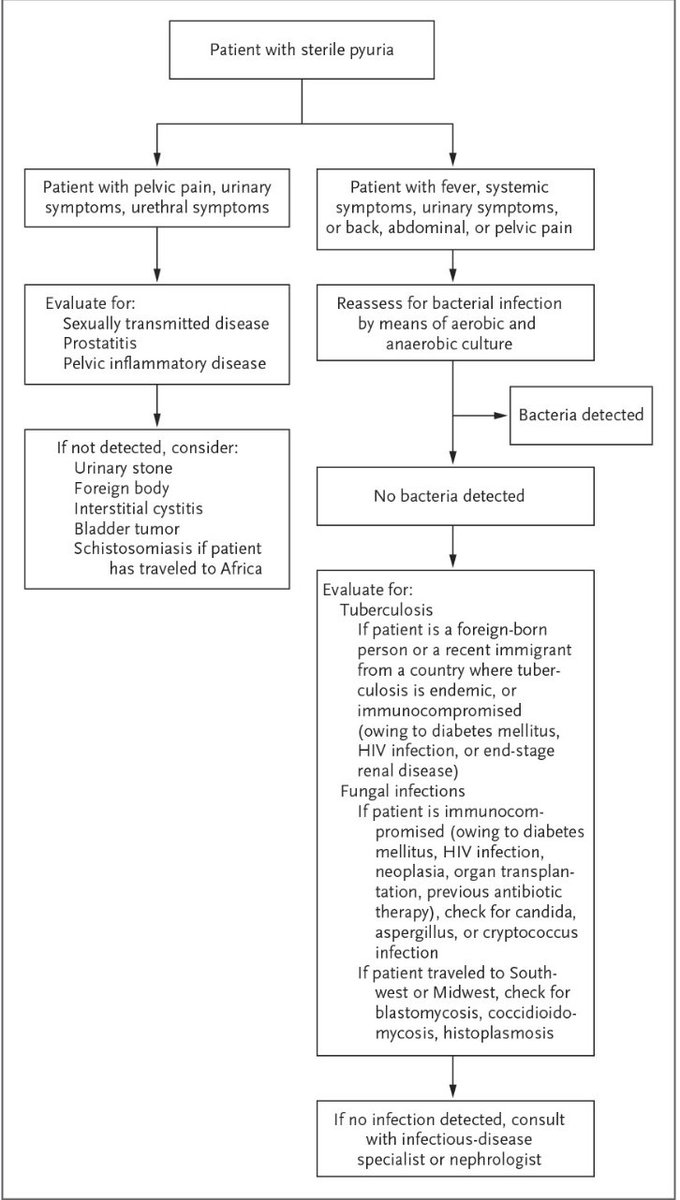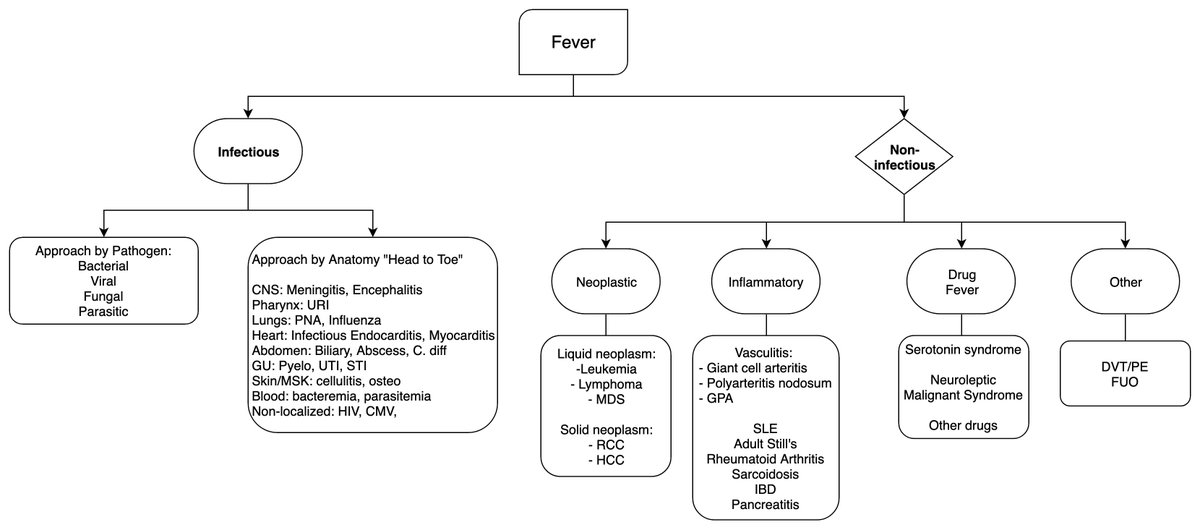@MedTweetorials
First: what is pyuria?
▪️≥ 10 WBC/mm3
▪️≥ 3 WBC/hpf
▪️pos gram's stain (unspun urine)
▪️Urinary dipstick pos for leuk esterase
And it is super common!
"13.9% of women and 2.6% of men are affected"
🤯 The DDx is waaaaay broader than I suspected, so let's take it by category
▪️Gonorrhea, Chlamydia, Mycoplasma
▪️HSV-2, Herpes Zoster
▪️HPV
▪️"In one study, among 104 patients with untreated HIV infection, 13% had pyuria"
Other viruses that do *not* typically have pyuria: adenovirus, BK, CMV --> sometimes cause hemorrhagic cystitis
💥 Most common form of non-pulmonary TB (~27% of cases)
Testing: in a study involving 42 pts w/ suspicion of genitourinary TB based on radiologic abnormalities:
💥 bladder biopsy: 46% pos
🧫 AFP: 37% pos
🧬 Urinary PCR: 94% pos
Candida albicans =most prevalent species > C. glabrata, C. tropicalis, C. krusei. Risk factor: DM
Transplant recipients: risk factor for aspergillosis
HIV infection: risk factor for crypto
Environmental exposure: risk factor for blasto/cocci/histo
🦠Trichomonas "In one study, 46/205 male partners of women w/ confirmed trichomonas infx (22%) had Cx-detected infx; 201/205 male partners (98%) had infection detected by PCR"
🦠Schistosoma haematobium: The urogenital system is affected in 75% of infected persons
💥Kawasaki's dz "sterile pyuria was identified in 40 of 133 patients (30%)
💥 SLE: "sterile pyuria was identified in 215 of 946 pts (23%)
💥 inflammation outside urinary tract: PNA, bacteremia etc.
Hope this was useful! Feedback/addition of nuance welcomed, as a tweetorial can't cover all the nuance of the phenomenal review article on which it was based 🙂
@jackpenner @rabihmgeha @DxRxEdu









